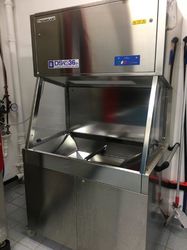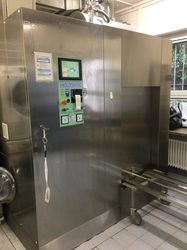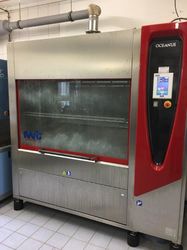Mouse Facility
In contrast to wild mice, laboratory mice live in a standardized environment free of pathogens. About 10,000 mice are kept at the FLI.
To ensure optimal housing conditions for the animals, numerous measures are taken:
Group life: The mice live together in small groups. Young animals are separated from the parents at three to four weeks of age.
Cages: All cages have their own air supply and extraction. The air is cleaned, filtered and humidified. The temperature is maintained at 21–22 degrees Celsius, with humidity between 40 and 60 percent. The cages are equipped with equipment such as play tunnels and nest building material.
Diet: The mice have unrestricted access to food and water. The food is optimally adapted to the needs of rodents and is sterilized before consumption.
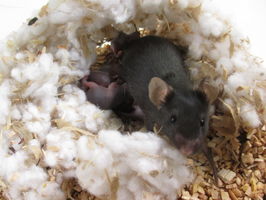
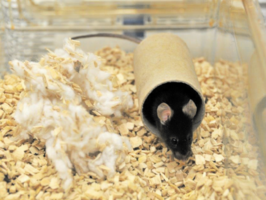
The animal husbandry team takes care of the mice’s well-being on a daily basis. Caretakers and veterinarians regularly check the health of the animals and treat symptoms of illness immediately. Cleaning and compliance with hygiene standards is ensured by the cleaning staff.
To ensure that our animals are in good hands, the FLI provides its own training for animal caretakers in the research and clinical fields. You can find more information about the training .
Tasks of the employees involved in mouse care:
Contact

Hellen Ahrens
Head Animal Facility Mouse
+49 3641 65-6606
hellen.ahrens@leibniz-fli.de
Typical tasks of the animal caretakers are the daily inspection of the mice, changing the water bottles and the cages, as well as feeding the animals. During the weekly cage change, the mice are placed in autoclaved (steam sterilized) cages with fresh bedding and nesting material. In addition, the health of the mice is thoroughly checked at each cage change. On a quarterly basis, an independent laboratory also inspects the hygiene of the mouse facility. In all mouse husbandry operations, compliance with high hygiene standards and strict documentation of all data have top priority.
Animal caretakers are also involved in breeding the various genetically modified mouse strains. They register newborn mice in an electronic database and evaluate each litter. Each mouse is given its own number and can be reliably identified throughout its life by this number as well as by a tattoo on its toe. Finally, the animal caretakers also support the scientists in carrying out experiments. With their careful work, they make an indispensable contribution to aging research at the FLI.
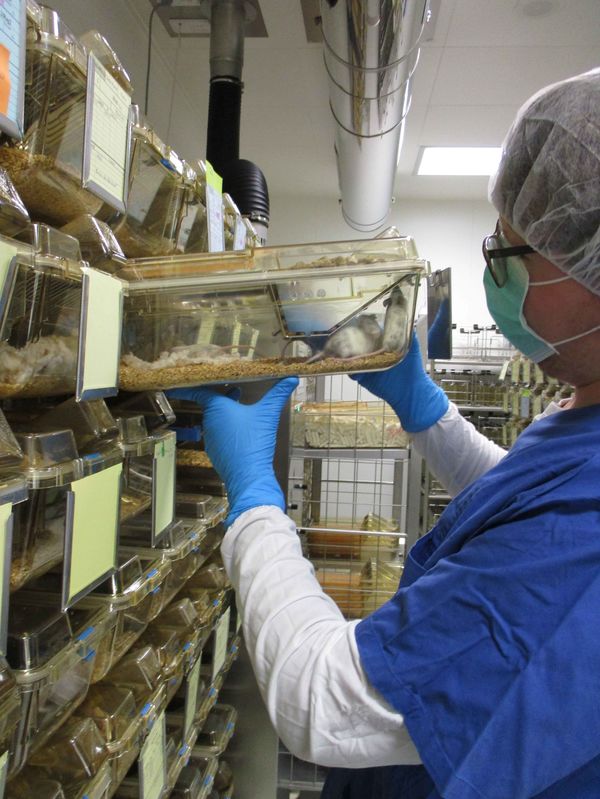
As a service to scientists, mouse husbandry offers, among other things, the sanitation of mouse strains. Mice of one mouse strain differ from other mouse strains through shared characteristics that have been introduced by breeding or genetic modification. Sanitation in this context means that embryos are removed from the animals of a mouse strain if it is contaminated with undesirable pathogens. These embryos are then transferred into pseudo-pregnant female mice kept in an area free of these pathogens. This improves the hygienic status of the mouse strain, rendering the research results more comparable and thus more informative.
Further services include cryopreservation, the freezing of mouse spermatazoa or embryos in order to maintain individual mouse strains. Cryopreservation allows mouse strains to be preserved for many years without breeding and to be reactivated for research as needed. The shipment of frozen sperm or embryos to cooperation partners eliminates the need for live animal transports.
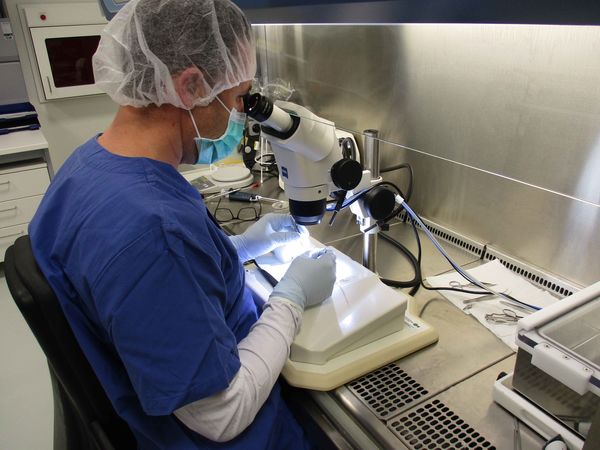
The basic prerequisites for conducting animal experiments are healthy animals and the absence of pathogens. Therefore, not only must the mice be bred in compliance with the strictest hygiene regulations and under constant health control, but cleanliness and sterility are also very important when working with the animals themselves and during the preparatory work. Set-up personnel have an important function here. Their tasks primarily include the preparation of working materials for the animal caretakers, for example the cleaning and sterilization of cages and water bottles. They are also responsible for monitoring and organizing supplies and stock levels.
